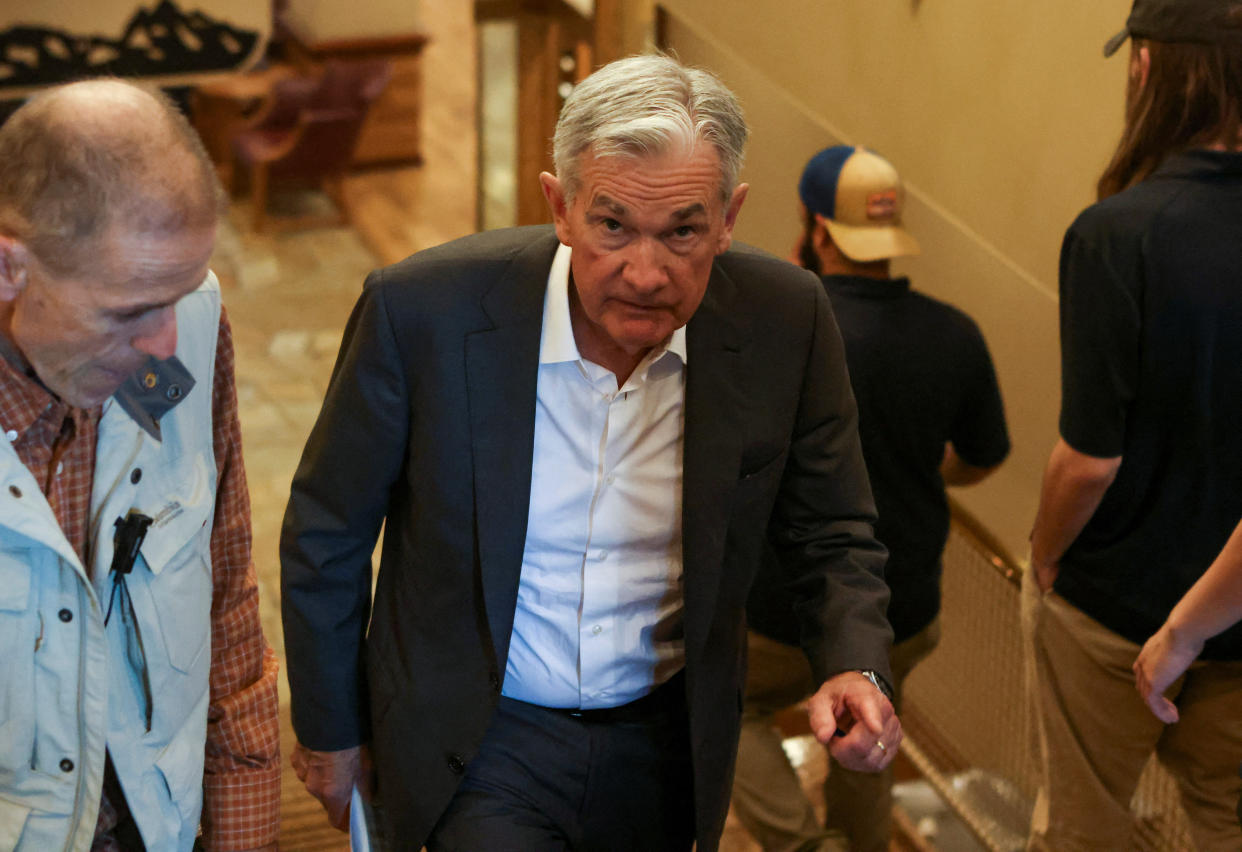This week in Bidenomics: Inflation mitigation
Three months ago, it looked as if inflation might doom Joe Biden’s presidency. Now, inflation is falling and Biden is rising.
A new Marist-NPR poll finds that 30% of voters say inflation is one of the main issues they think about when considering how to vote in the November midterm elections. That’s down from 37% in July. Inflation still tops the second-biggest concern, which is abortion, cited by 22% of voters. But inflation is clearly receding and the timing is good for Biden and his fellow Democrats.
There will be two more monthly inflation reports before the midterms on Nov. 8. Some economists think the year-over-year inflation rate will fall from 8.5% to less than 8% in the report due out Sept. 13. There could also be a month-to-month drop in prices in the next report, and in the one after that.
“The inflation dragon has not been slain but it is losing altitude,” Stuart Hoffman, senior economic adviser at PNC Financial, tweeted on Sept. 4.
Energy prices are driving inflation down, just as they drove inflation up during the first half of the year. U.S. oil prices hit $122 per barrel in June, but are now down to around $86 per barrel. Gasoline prices have followed that decline, dropping from a high of $5.02 per gallon in June to $3.74. Energy analysts expect the downward price pressure to continue, which has some interesting implications.
On Nov. 8, 2021, U.S. gasoline prices averaged $3.50 per gallon. If prices fall by another 25 cents or more during the next eight weeks, they’ll be lower on Election Day than they were a year earlier. That seemed impossible just a few months ago, yet since June there’s been an unprecedented plunge in prices, for a couple of reasons. The Russia-Ukraine war has not disrupted global oil supplies as much as traders expected earlier this year. There are also pronounced economic slowdowns in China and Europe, which has tempered demand for energy.
[Follow Rick Newman on Twitter, sign up for his newsletter or send in your thoughts.]
Prices aren’t collapsing everywhere. U.S. natural gas prices are about twice as high as they were a year ago, which means heat and electricity will probably cost more this winter than last. Higher energy costs also raise the cost of products that require a lot of energy to manufacture or transport, including food. So costlier natural gas will offset some of the declining cost of gasoline and diesel. Wages have also been rising by more than usual, which is good for workers but raises costs for businesses, which try to pass them along to consumers via higher prices.

The Federal Reserve seems unconvinced that inflation is moderating. Fed Chair Jerome Powell has been more hawkish than ever in recent remarks, indicating that the Fed is willing to push unemployment higher if that’s what it takes to force inflation toward its target of 2%. The Fed’s interest-rate hikes tighten economic conditions for households and businesses, which in turn constricts spending and slows growth. Some companies will hire fewer workers, as a result, while some will have to trim payrolls.
The Fed will announce its next interest-rate move on Sept. 21. If it hikes short-term rates by three-quarters of a percentage point, or 75 basis points, that means it still sees ample reason to worry about persistent high inflation. If it’s a smaller hike, of half a point, or 50 basis points, that means the Fed sees clear evidence inflation is easing. The stock market would probably rally on a half-point hike, because investors will celebrate any sign that inflation may cease to be a problem in the near future.
The Fed’s next rate-hike move would most likely come at the end of its next policy gathering, on Nov. 2—six days before the elections. The Fed may want to make a big move in September so it can make a smaller move in November, and avoid any allegation that it’s trying to sway the election one way or another.
Most consumers don’t need to know what the Fed thinks, or even what the official inflation rate is, to gauge the effect of rising prices on their own budgets. They know the price of gas, food and rent, and register their displeasure when the pain mounts. That’s the main reason Biden’s approval rating fell from positive to negative during the last 13 months, bottoming out at 38% in July.
His approval rating has rebounded to 43%, which isn’t high enough to lead his Democratic party to commanding victories in November. But it’s going in the right direction. The main question is whether it will go substantially higher, giving Democrats a chance to defy the odds and hold onto both houses of Congress.
Price levels during the next eight weeks will provide the answer. Democrats probably need something close to an economic miracle to keep control of the House, where incumbent retirements and redistricting put them at a natural disadvantage. But if inflation continues to fade as a voter concern, an upset could be brewing. The most important clues signaling the outcome of the midterms are at the gas station and the grocery store.
Click here for politics news related to business and money
Read the latest financial and business news from Yahoo Finance
Download the Yahoo Finance app for Apple or Android
Follow Yahoo Finance on Twitter, Facebook, Instagram, Flipboard, LinkedIn, and YouTube
